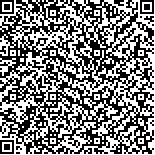| 摘要: |
| 为探究光环境、体质与视健康的交互
作用关系,保护高风险体质者视觉作业安全。首
先,对重庆地区9家建筑勘察设计企业进行光环
境调研,测量72间视觉显示终端(VDT)办公
室的水平作业面照度、相关色温、眼位照度等光
环境参数,计算节律照明相关指标,并与标准进
行比对;然后,对541名青年设计师进行中医体
质辨识及视疲劳特征记录;最后,基于中医体
病相关理论,分析环境光照下体质与近视、视
疲劳的相关性,辨别视健康高风险体质。结果
表明:青年设计师的体质类型以平和质为主,在
9种体质中占比最高;偏颇体质中阳虚质占比最
高,对近视、视疲劳的易感性显著高于平和质;
工作场所长期日光暴露不足、节律刺激过低易诱
发体质向阳虚质转变,增加视健康风险。 |
| 关键词: 作业光环境 视健康 视觉显示终端 中医体质 个体差异 |
| DOI:10.13791/j.cnki.hsfwest.20240121 |
| 分类号: |
| 基金项目:国家自然科学基金项目(51778081、51978097) |
|
| Effect of VDT task lighting environment on visual health of designers with differentconstitutions |
|
YU Quan,YAN Yonghong,ZHAO Pinyong,LU Yu
|
| Abstract: |
| Lighting in visual display terminal(VDT) offices is considered to be one of the main
factors influencing employees’ visual health. On the one hand, improper lighting conditions can lead
to increased visual fatigue. On the other hand, recent studies reveal that light is not only essential
for vision but also achieves important non-visual effects on a host of physiological functions. These
effects depend largely on person-specific parameters. Differences between individuals may modulate
the effects of light exposure, with some people exhibiting stronger responses than others. Hence,
targeted studies to identify susceptible groups and establish a scientific classification method are
necessary for delivering appropriate light doses and protecting employees’ visual safety.
This study investigates the relationship among light environment, the traditional Chinese
medicine (TCM) constitution, and visual healthy, and explores the feasibility of identifying
susceptible groups using TCM constitutions. Firstly, a field study is conducted on nine architectural
design companies with standard management and complete regulations in Chongqing, China. Each
company employs more than 100 people, and their working hours are approximately from 9:00
am to 18:00 pm. The lighting environment of 72 visual display terminal (VDT) offices is assessed
and measured at these companies. Horizontal illuminance on the working plane, correlated color
temperature (CCT) and illuminance uniformity ratio (U0) are selected as the indexes of the visual
lighting. Illuminance at the eye, mEDI (melanopic equivalent daylight illuminance), EML(equivalent
melanopic lux) and CS (Circadian Scale) are selected as the indexes of circadian lighting. Then, 541
young designers with similar workloads, work content, working hours, and lighting environments are
recruited from these offices. The TCM physical constitution scale and a self-reported visual health
questionnaire are used to evaluate the TCM constitution types and visual fatigue of these young
designers. Finally, statistical analysis are performed using SPSS 19.0 software. Descriptive analysis
of the distribution of TCM constitutions, myopia rates, and visual fatigue data are conducted.
The chi-square test and Fisher’s exact test (whenever appropriate) are performed to determine the
differences between the groups.
The result of lighting environment investigation shows that the average horizontal illuminance
on the working plane of 95.8% offices is ranging from 300 lx to 500 lx. These values meets the
standard requirement for general offices, but is lower than the standard value of 500 lx recommended
for lighting of design offices. The CCT of 62.5% offices is higher than the standard. Data on circadian
lighting of typical VDT office shows that the circadian lighting of near window workstations is
higher than the corresponding recommended values in the morning, but lower in the afternoon. The
circadian lighting of central and far window workstations do not satisfy the recommended values
during the day.
The results of investigation on the TCM constitution reveal that the balanced constitution(27.2%)
is the most common constitution type of young designers, accounting for the highest proportion
among 9 constitutions; yang-deficiency constitution(13.7%) is the most common type of unbalanced
constitutions. With respect to the association between myopia and constitution, the results implies
that participants with yang deficiency(87.8%) , qi stagnation(87.2%) , and yin deficiency(79.7%)
constitutions contribute to the top three myopia rates. The myopia rate of participants with a yangdeficiency constitution is significantly higher than those with a balanced constitution (p<0.05).After working on computers for 8 hours, participants with qi deficiency(77.4%), yang deficiency(74.3%), and qi stagnation (72.3%) constitute contribute
to the top three incidences of visual fatigue. In contrast, the incidence of visual fatigue is lowest in participants with balanced constitutions(59.9%). The
incidence of visual fatigue in participants with qi deficiency(p<0.05) and yang-deficiency constitution(p<0.05) is significantly higher than those with
balanced constitution. The proportion of visual fatigue reported by qi deficiency, yang deficiency, and balanced constitution is highest at 3 h, 1 h, and 5 h,
respectively. Statistically significant differences in visual fatigue among the three constitutions are found at 1 h and 5 h(p<0.05). Visual fatigue appears
earliest(1 h) in the yang-deficient constitution. However, it appears at the latest(5 h) in the balanced constitution. In other words, short-term VDT use may
cause more visual fatigue in the yang-deficiency constitution, while longer VDT operation can withstood in a balanced constitution with less visual fatigue.
In conclusion, this study provides basic data on the distribution of TCM constitutions among young designers in Chongqing, and reveals a close interaction
among myopia, visual fatigue, and TCM constitution. Individuals with yang-deficiency constitution take a significantly increased risk of developing myopia and
visual fatigue compared to those with a balanced constitution. The long-term insufficient sunlight exposure and low circadian stimulation in the workplace could
easily lead to the transformation of physical fitness to yang-deficiency and increase the risk of visual health. This study provides a potential method to predict
individual-level light sensitivity and takes a new approach to develop optimized lighting strategies in workplaces. |
| Key words: task lighting environment visual health visual display terminal(VDT) traditional Chinese medicine (TCM) constitution individual differences |


